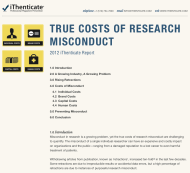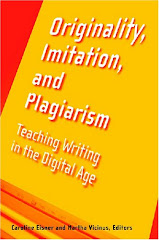German scientists and doctoral students are signing an open letter to the German Chancellor by the droves. There are some 7000 signatures as of Feb. 26, 2011. >>>
February 26, 2011
February 24, 2011
German minister loses doctorate after plagiarism row
Germany's defence minister has been stripped of his university doctorate after he was found to have copied large parts of his work from others.
Karl-Theodor zu Guttenberg, an aristocrat who lives in a Bavarian castle, admitted breaching standards but denied deliberately cheating.
Analysis revealed that more than half of his thesis had long sections lifted word-for-word from the work of others.
So far the German Chancellor, Angela Merkel, has stood by the minister.
The University of Bayreuth decided that Mr Guttenberg had "violated scientific duties to a considerable extent".
It deplored the fact that he had lifted sections of text without attribution.
Last week Mr Guttenberg said he would temporarily give up his PhD title while the university investigated the charges of plagiarism. He admitted that he had made "serious mistakes".
His thesis - Constitution and Constitutional Treaty: Constitutional Developments in the US and EU - was completed in 2006 and published in 2009.
Chancellor Merkel insisted on Monday that she was standing by her defence minister, who was seen as something of a rising star in her conservative coalition.
"I appointed Guttenberg as minister of defence," she told reporters.
"I did not appoint him as an academic assistant or doctor. What is important to me is his work as minister of defence and he carries out these duties perfectly."
February 22, 2011
German minister gives up doctorate after plagiarism row
Germany's defence minister has given up his doctoral title for good, after allegations that he had plagiarised sections of his thesis.
Last week Karl-Theodor zu Guttenberg said he would temporarily give up the title while his university investigated the charges.
The University of Bayreuth says he has now asked them to retract his doctorate in law, according to German TV.
Mr Guttenberg admitted that he had made "serious mistakes".>>>
February 18, 2011
Misconduct and adventure - TheScientist
The Lab, a new interactive film from the Office of Research Integrity, is a fresh approach to research misconduct training.
February 9, 2011
Why Cheating is Wrong
Scott Williams & Michael Courtney
Abstract: Mathieu Bouville’s "Why is cheating wrong?" (Studies in Philosophy and Education, 29(1), 67-76, 2010) misses the mark by failing to consider the longer term consequences of cheating on student character development and longer term societal consequences of undermining professional expertise and trust in disciplines where an earned degree is an essential part of professional certification and qualifications. Educators who turn a blind eye to student cheating are cheating the public by failing to deliver on the promise of graduates who genuinely earned their degrees.
Keywords: academic dishonesty, academic integrity, academic misconduct, education, ethics, homework, plagiarism
Intellectual gymnastics (Bouville 2010) do not change the fact that cheating is wrong. In a series of self-limiting arguments, the author repeatedly dismisses the negative effects of cheating, suggests cheating is essentially equivalent to dysfunctional pedagogy, and claims cheating is therefore wrong only to the extent that it has material consequences on learning and assessment. That cheating – to practice fraud or deceit (cheating n.d.) – is wrong independent of academic consequences is dismissed. Yet the objective wrongness of cheating is the central issue. Moreover, while the author offers legitimate criticism of common pedagogical practices, the uses and efficacy of grades, and the sometimes misplaced focus of the academic system, his attempts to dismiss the effects of cheating in light of these concerns ring hollow. Imperfections in sincere efforts to engage and assess student learning cannot be equated with deliberate attempts to defraud the system.
The negative effects of cheating go far beyond immediate issues such as diluting the meaning of grades, creating inequity between students, or undermining the learning environment, even if the effects of these things are less substantial than is generally perceived. Since actions form habits, and habits form character, academic dishonesty builds into the character a propensity for dishonesty. In addition, since academic credentials are criteria for professional certifications, academic dishonesty carries the risk of the unfounded illusion of professional competence. How many readers relish the thought of being treated by doctors who cheated in their anatomy and physiology courses, or having important lab tests performed by technicians who fraudulently secured (via cheating) their required certifications?
An individual’s character and integrity are paramount. Here at the United States Air Force Academy, our mission is to commission leaders of character who are prepared to honorably serve their nation. The nation expects and requires its military officers to uphold their oaths of office, adhere to the highest standards of conduct, effectively lead those in their command, and steward both weapons of war and secrets of national security. Furthermore, earned degrees are required components for certification of professional competence in many areas of military service. Cheating at any stage of officer development and regardless of immediate consequences is therefore absolutely incompatible with the profession of arms. What nation wants military officers in charge of navigation, engineering, or other technical issues related to national security who cheated their way through coursework rather than demonstrating genuine competence in required subject areas? What nation is eager to entrust the lives of its sons and daughters or its weapons of war to those who cannot even demonstrate faithfulness in college coursework?
It is sophistry to argue, "Breaking a rule is illegitimate only if the rule is legitimate. Either the rule has a rational justification and this rather than breaking a rule makes cheating wrong, or the rule is arbitrary and there is no reason to endorse it." (Bouville 2010) The legitimacy of rules rests in the legitimacy of the issuing authority; it is not given to individual students to whimsically decide whether or not the rules apply to them, especially when the student has agreed (implicitly or explicitly) to the rules by virtue of enrollment. To claim otherwise is to promote anarchy – a chaotic system with no real standards as students choose for themselves what feels right to them. How many citizens are eager to live in a country where the police and the military only follow the rules they deem to have adequate rational justification? The human mind has infinite capacity for finding flaws in the "rational justification" of rules that the human heart is inclined to disobey. Due process in the making and enforcing of rules and laws of orderly society does not require "rational justification" to the satisfaction of every individual who has a duty of compliance.
People expect their doctors, their pilots, their engineers, and their military officers to have genuinely earned their professional credentials and to meet rigorous standards in areas of knowledge and conduct necessary for public trust in the performance of their duties. Cheating is wrong because academic dishonesty in the training of these professions undermines both the expected level of expertise and the expected level of trust. Educators have a duty to society to ensure the quality of graduates, and this duty includes good faith efforts to prevent academic dishonesty.
Bouville, M. (2010) Why is cheating wrong? Studies in Philosophy and Education, 29(1), 67-76.
cheating. (n.d.).Dictionary.com Unabridged. Retrieved January 29, 2010,
cheating. (n.d.).Dictionary.com Unabridged. Retrieved January 29, 2010,
from Dictionary.com website: http://dictionary.reference.com/browse/cheating >>>
February 5, 2011
Editors Crack Down on Plagiarism With Help of Detective Software
Adam Marcus
If a plagiarist plagiarizes from an author who has plagiarized, do we call it a wash and go for a beer?
That scenario is precisely what Steven L. Shafer, MD, found himself facing recently. Dr. Shafer, editor-in-chief of Anesthesia & Analgesia (A&A), learned that authors of a 2008 case report in his publication had lifted two-and-a-half paragraphs of text from a 2004 paper published in the Canadian Journal of Anesthesia.A contrite retraction letter, which appeared in the December 2010 issue of A&A, from the lead author, Sushma Bhatnagar, MD, of New Delhi, called the plagiarism “unintended” and apologized for the incident. Straightforward enough.
But then things got sticky. The December issue of A&A also retracted a 2010 manuscript by Turkish researchers who, according to Dr. Shafer, plagiarized from at least five other published papers—one of which happens to have been a 2008 article by Dr. Bhatnagar in the Journal of Palliative Medicine.
“Dr. Bhatnagar’s paper in Anesthesia & Analgesia was retracted because it contained text taken from a paper by Dr. Munir,” Dr. Shafer said. “However, Dr. Bhatnagar’s paper in the Journal of Palliative Medicine is one of the source journals for the plagiarism by Dr. Memis. To give you an idea how widespread this is, we recently rejected a paper that copied large blocks of text from a paper by Dr. Memis”
Plagiarism’s No Joke
As farcical as the case of merry-go-round cheating might be at first blush, journal editors are far from amused by the episode and similar incidents. Dr. Shafer, for example, estimates that he spends up to one-third of his time dealing with lifted text or, less commonly, fraudulent presentations of data in manuscripts. He still devotes several hours each week to sorting out the aftermath of the Scott Reuben, MD, fiasco—a sweeping case of data fabrication that led to the retraction of 21 papers, 11 of which appeared in A&A. He expects the fallout to linger for years.
Dr. Shafer said his journal is now running every submitted manuscript through CrossCheck, a copy-checking system that allows editors and publishers to screen papers for signs of plagiarism. A&A, through its publisher Lippincott, Williams & Wilkins, belongs to a consortium called CrossRef, one of whose goals is to prevent misuse of previously published material using CrossCheck, which screens manuscripts against a database of articles in order to detect possible plagiarism.
Robert Creutz, general manager of iThenticate, which makes the software that powers CrossCheck, said the plagiarism catcher now has access to some 50,000 titles and 28 million published articles. “We can generally evaluate a manuscript in anywhere from 45 seconds to three minutes,” Mr. Creutz said.
Individual customers pay $1,000 per year for 500 pages of checking. Members of the CrossRef consortium have a different arrangement. They pay 75 cents per manuscript (under 25,000 words) but earned the discount by agreeing to provide iThenticate with access to thousands of papers upfront as seed for the database.
“I’m seeing a lot of journals overseas that are taking advantage of the technology,” Mr. Creutz said. The motivation appears to be competing with established journals and improving impact factor, he added.
Dr. Shafer said that since his journal began screening manuscripts routinely for signs of plagiarism, he has identified about a dozen papers with unacceptable amounts of verbatim text from other sources. That’s a rate of approximately one in 10 submissions to A&A, he said.
Authors for whom English is not their native language may inadvertently commit plagiarism, Dr. Shafer observed. “I am very sympathetic to the challenges faced by investigators struggling to write a scientific paper in an unfamiliar language. However, I have no choice but to retract papers that contain plagiarized text, even if it is only a single paragraph, and even if the intent was simply to express an idea in proper scientific English,” he said.
The U.K. journal Anaesthesia has been using CrossCheck to screen every manuscript it receives, according to Steven M. Yentis, MD, editor-in-chief of the publication. In a recent editorial, Dr. Yentis said his journal publication rejected 4% of submitted manuscripts in 2010 because the software turned up evidence of plagiarism.
For example, how common are retractions from the anesthesia literature? Dr. Yentis looked at this question last June, and came up with the following numbers: 26 from the eight leading titles in the specialty dating back to 1993. Of those, 16 (62%) involved papers on which Dr. Reuben was a co-author.
The tally does not include the retraction in the December issue of A&A of an article by German researcher Joachim Boldt, MD, PhD, and colleagues. It does, however, include a retraction in Anaesthesia—evidently the first yet by the title—of a paper on the safety of cardiac surgery without transfusions in Jehovah’s Witnesses.
According to the retraction notice, “the study did not have ethical approval as claimed. In addition, the article was written and submitted without the knowledge or consent” of three of the four authors, who agreed to the retraction. “It has not been possible,” the notice concludes, “to obtain a response from the corresponding author”—who, to add insult to the injury of forgery, evidently misspelled the surname of one of his unwitting collaborators.
Recently, an Internet forum for medical editors was buzzing with complaints about author misconduct.
“The kinds of crimes I have seen over the years are at best belief defying,” wrote Udo Schuklenk, PhD, professor of philosophy at Queen’s University in Kingston, Ontario, and co-editor-in-chief of the journals Bioethics and Developing World Bioethics. “My all-time favorite, by a long stretch, was the medical journal deputy editor who plagiarized a whole piece we had published in his medical journal (a paper on medical ethics, appreciate the irony of it all). We duly contacted his editor-in-chief as well as the journal’s editorial board. After extended umming and aahhing we were told that a correction (!) would be published, and that—given the deputy editor’s seniority, experience and professional standing—they had accepted the ‘honest mistake’ explanation of their plagiarizing medical ethics expert.”
By the way, A&A retracted another article in the December issue, but it doesn’t involve plagiarism, at least not from someone else’s text. In this case, the authors republished a paper they had previously published in German.
Subscribe to:
Posts (Atom)
Random Posts
.
.
Popular Posts
-
This guest post is from Kayhan Kantarlı, a retired professor of physics from the University of Ege in Turkey. He published a first versio...
-
Jeffrey Beall This is a list of questionable, scholarly open-access publishers. I recommend that scholars not do any business with these pu...
-
The Yomiuri Shimbun Turkish national Serkan Anilir, recently stripped of the doctorate he obtained from the University of Tokyo over plagiar...
-
Richard Knox Many online journals are ready to publish bad research in exchange for a credit card number. That's the conclusion o...
-
When Robert Barbato of the E. Philip Saunders College of Business at Rochester Institute of Technology (RIT) heard he was being accused of p...









